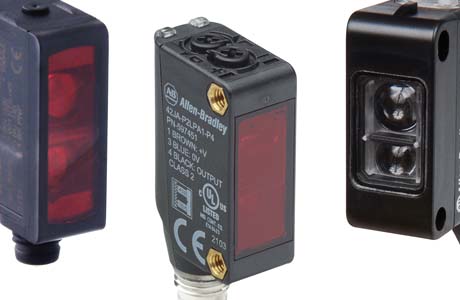What Is a Photoelectric Sensor?
Key Takeaway
A photoelectric sensor is an equipment that uses light to detect the presence, absence, or distance of an object. They operate by emitting a light beam (Red Light or infrared) and detecting changes in the light pattern caused by an object intercepting the beam, used widely in automation and manufacturing.
Defining the Photoelectric Sensor
A photoelectric sensor is a staple in automation technology, primarily used to identify the presence and details of objects without any contact. By emitting a beam of light, these sensors can determine the position, and even the absence, of items across a variety of industrial settings. This ability to ‘see’ and ‘report’ makes them invaluable in environments where precision is key to productivity.
These sensors streamline processes by offering real-time data that can drastically reduce errors and increase throughput. Understanding how they work can enhance your ability to implement them effectively in complex systems where manual monitoring is impractical.

Key Components and Functionality
At the heart of a photoelectric sensor are three critical components: the light emitter, the receiver, and the processing unit. The light emitter projects a beam towards the target, which may be reflected back or broken, depending on the object’s characteristics and the sensor type. The receiver detects this change and sends the data to the processor, which interprets the signal to make real-time decisions.
This setup is not just sophisticated; it’s designed to ensure durability and reliability. The non-contact nature of these sensors allows them to operate efficiently over long periods without the wear and tear associated with mechanical parts, which is a huge advantage in industrial applications.
The Science of Light-Based Detection
The principle behind the Omron photoelectric switch is straightforward yet profound. They use the properties of light and its interaction with objects to detect changes in a given environment. Whether it’s a clear object on a conveyor belt or a component being placed in an assembly, the sensor can reliably trigger a response based on the light that either returns to it or is interrupted.
This method of detection harnesses various types of light, including infrared for applications requiring discretion in visible conditions and laser light for precise detection over longer distances. The choice of light type and sensor configuration can greatly affect the efficiency of the process, tailoring the system to meet specific industrial needs.
Comparing Photoelectric Sensors to Other Types
When we put photoelectric sensors side by side with other types, like inductive or capacitive sensors, their benefits become even clearer. Unlike inductive sensors, which only detect metallic objects, or capacitive sensors, which are affected by the material’s properties, photoelectric sensors can detect a wide range of materials with high accuracy. This makes them extremely versatile.
Furthermore, photoelectric sensors are less likely to be influenced by environmental conditions such as dust, water, and electromagnetic interference, which can significantly impair other types of sensors. This robustness makes them suitable for a variety of industrial environments, from clean rooms to rugged outdoor settings.
Advantages of Photoelectric Sensing Technology
The advantages of using photoelectric sensors are numerous. They are incredibly responsive, providing immediate feedback that is crucial for high-speed automation processes. Their flexibility in detecting different sizes, colors, and materials also makes them an essential part of any modern automated system.
Additionally, their ability to maintain functionality over long distances is a game-changer for industries that require reliable monitoring across expansive areas. Whether in logistics tracking moving goods or in packaging ensuring quality control, their precision is unmatched.
Conclusion
In the realm of automation, photoelectric sensors are not just tools; they are game changers. They empower industries to maintain high standards of quality and efficiency with minimal downtime. For someone new to industrial automation, mastering the use of these sensors can provide a significant edge in designing systems that are not only effective but also innovative.
As you continue to explore the vast capabilities of photoelectric sensors, remember that their integration can transform mere operational processes into dynamic systems that propel businesses forward. Their reliability, adaptability, and precision make them indispensable in the push towards more automated, efficient, and safe production environments.
